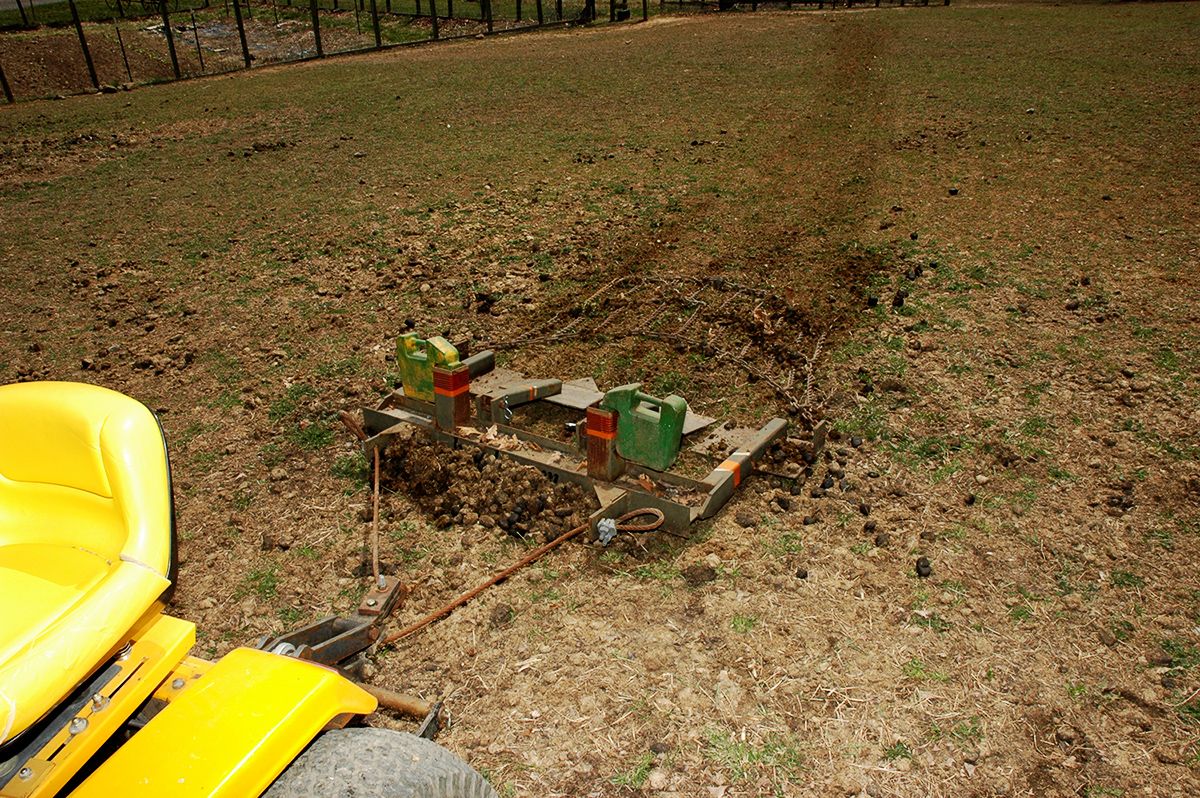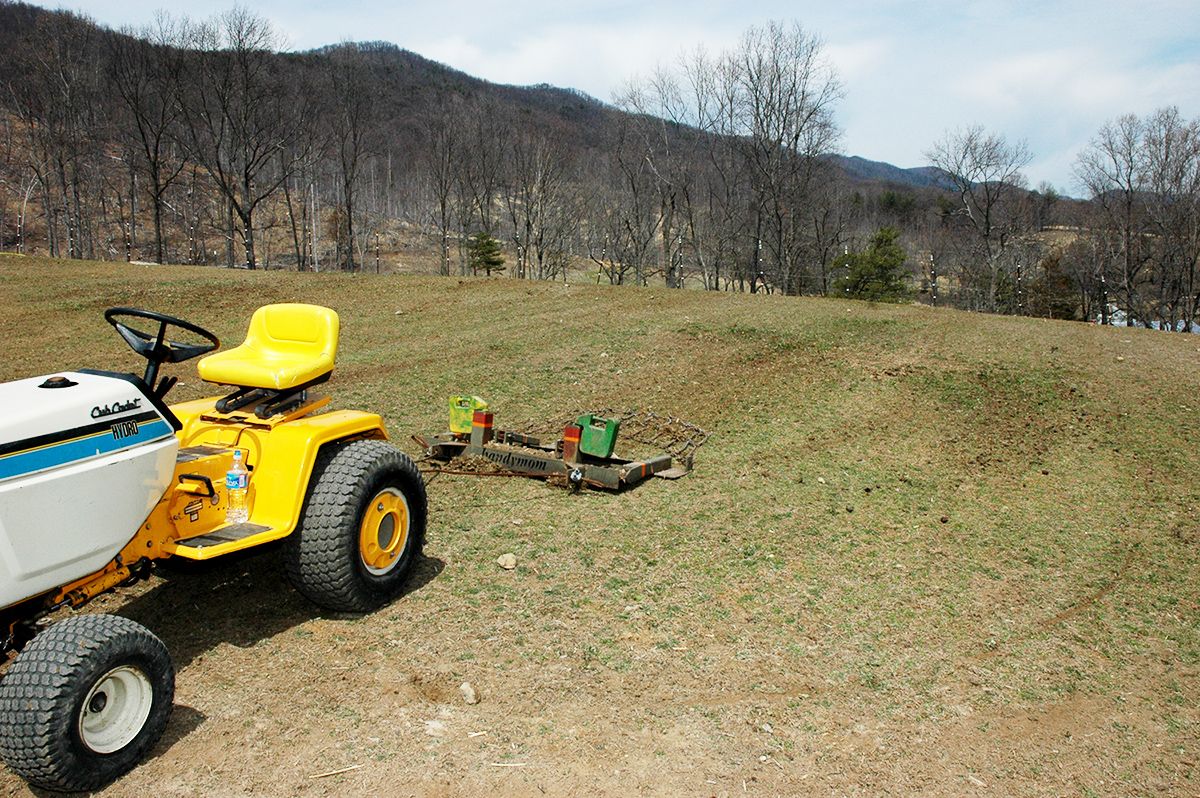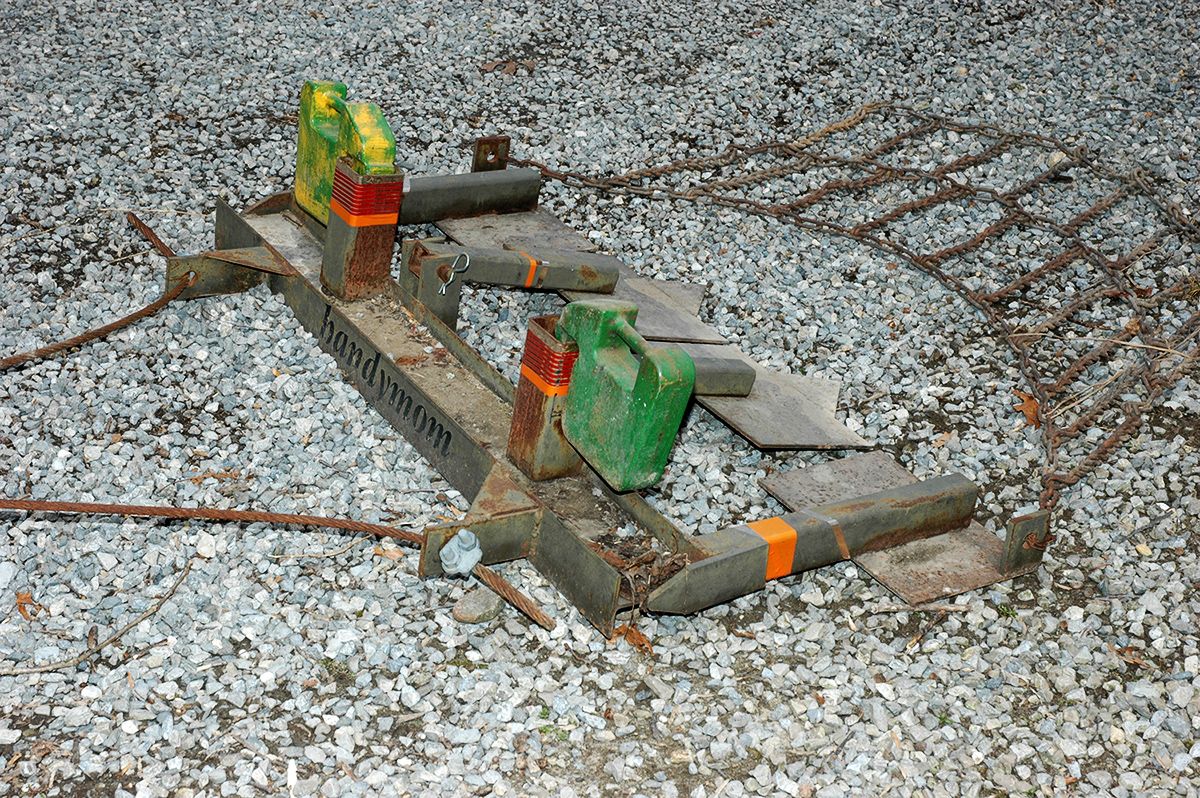the spike on a harrow! the angle of them and being able to adjust the angle. can make a HUGE difference. if you ran say a tiller through area and broke ground up already, any type of something will work. but when dealing with dry hard untouched ground it is a different story. adding weight can help but it only goes so far.
the abilty to angle the spikes, allows you to either place them at an angle to allow them to dig in a little deeper, or hop skip and jump around on the surface of the ground.
example:
STH15 Series Spike Tooth Harrows | Land Pride hard to tell in picture, but there is a "handle" in the middle. that allows you to adjust angle of the spikes. it is also mounted on 3pt hitch, making it much easier to deal with "clumps of crud" that will build up on the spikes. so when you get to a given area, you can lift the spikes up off ground and hopefully everything falls off.
=================
a chain harrow, or chain link fence, or like doing, it becomes a real drag in trying to deal with clumps of grass / weeds / twigs / roots that get tangled up on it. and builds up on it. and need / want some sort of "boom" or something hooked to 3pt hitch so you can raise and lower the chain up and down to deal with accumulated crud.
==================
a 3pt hitch discs can be nice, they can be used and are a tillage tool. and can break up and slice up the ground. and then once everything is sliced and opened up some on the surface, toss your grass seed out, and run disc back over everything a couple times, to mix the seed back into the dirt some.
a box blade that has a set of rippers on it, can also be used. just do not set the rippers all the way down, but 1" to 2" down just enough to scrap up and get couple inches of dirt to crumble up.
a harrow to me is more of a "last end tool" were you are doing final grading and finishing stuff up to get it all smooth, AND/OR using it to drag out clumps of grass and twigs and like from the dirt. so you can smooth it out.
================
if you are dealing with uneven ground, and more so RUTS put in by tractors, trucks, and other heavy equipment. simply messing around with first couple inches of dirt, and/or adding extra dirt into the rut is not really fixing issue and applying a bandaid. if you use a bottom plow / mold board plow to get deeper or an actual tiller. you can get down 8 or so inches deep. and then re spread the dirt out and remove the ruts.
a set of discs, box blade, tiller, bottom plow, powered harrow (forget technical name) can all sink in some into the ground more to help resolve un-eveness and deal with hard panning and ruts better.
===============
FEL with general duty bucket (possibly a tooth bar on it), or rear blade, and better yet a box blade. can help move dirt around better from high to low spots. and then the harrow used at the end to do finial touch ups.
=============
check out Tractor Attachments And Skid Steer Attachments For Any Tractor Or Skid Steer lots of videos for all the equipment and good set of text to go along with it all. might help give perspective of what this or that does. and help ya figure out something.
if you google
harrow site:tractorbynet.com
the above will search for "harrow" and only at tractorbynet.com
and if you click up on images on google, you should get additional results.
===========
last might thought. if you have a 3pt hitch rear blade. and know how to weld / have welder. pull rear blade off, and build a new blade but with teeth on it.
you can get a 3pt hitch tool bar (err forget technical name) looks like pallet forks for 3pt hitch is not, many folks use it to build a platform on it to hold tools / gennerator, water tanks etc...) but for you, use the tool bar and weld some spikes and bars across it for a spiked harrow and adjust angle with the 3pt hitch.








